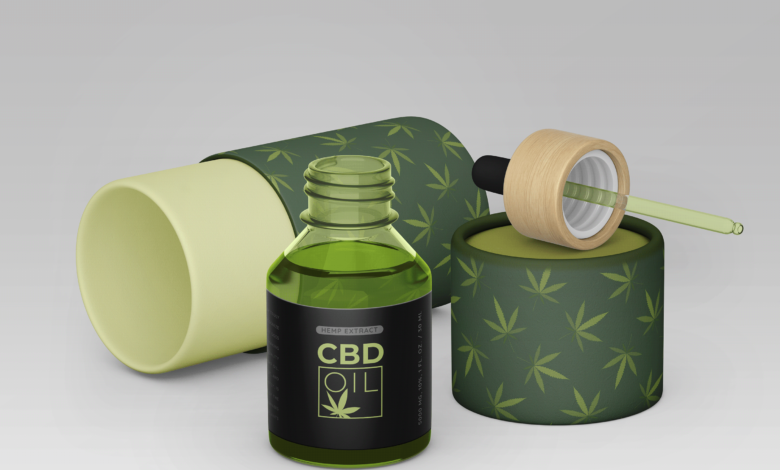
Choosing the right materials for hemp oil packaging is crucial for protecting your product, enhancing your brand, and meeting regulatory requirements. Hemp oil, being a natural and often delicate product, demands packaging that not only safeguards its quality but also appeals to eco-conscious consumers. With the growing popularity of hemp oil and its derivatives, the need for effective and attractive packaging has never been greater. In this guide, we’ll walk you through the key considerations and options when selecting materials for your hemp oil packaging.
Understanding Hemp Oil Packaging Requirements
Before diving into the materials, it’s essential to understand the specific requirements for hemp oil packaging. Hemp oil is sensitive to light, heat, and air, which can degrade its quality over time. Therefore, the packaging must provide adequate protection from these elements.
Additionally, the packaging should align with industry standards and regulations, which often mandate child-resistant features, proper labeling, and safe storage. With these factors in mind, let’s explore the material options for custom hemp oil boxes.
Tip 1: Prioritize Protection and Preservation
The primary function of hemp packaging is to protect the product from external factors that could compromise its quality. Here are the key considerations:
- Barrier Protection: Choose materials that offer excellent barrier protection against light, oxygen, and moisture. These factors can cause hemp oil to degrade, losing its potency and flavor. Glass and certain plastics are common choices for their ability to block out harmful UV rays and seal out air.
- Durability: The material should be sturdy enough to withstand shipping, handling, and storage without compromising the integrity of the hemp oil boxes. Rigid cardboard or chipboard is often used for outer boxes due to its durability and ability to protect the contents from physical damage.
- Child-Resistant Features: Regulations often require hemp oil packaging to be child-resistant. When selecting materials, consider options that can easily integrate with child-resistant closures, such as specific types of plastics or glass with secure lids.
Tip 2: Choose Eco-Friendly Materials
As consumers become more environmentally conscious, the demand for eco-friendly packaging has increased. Choosing sustainable materials for your hemp oil packaging not only appeals to this growing market but also aligns with the natural image of hemp products.
- Recycled Paper and Cardboard: Recycled materials, such as paperboard and cardboard, are popular choices for custom hemp oil boxes. They are not only environmentally friendly but also cost-effective. Recycled cardboard can be just as sturdy and durable as new materials, making it a great option for outer packaging.
- Biodegradable Plastics: For products that require plastic components, consider using biodegradable plastics. These materials break down more easily in the environment, reducing the ecological footprint of your packaging.
- Glass: Glass is a sustainable option that is 100% recyclable. It’s an excellent choice for primary packaging (the bottle or container that directly holds the hemp oil) due to its non-reactive nature and ability to preserve the oil’s quality. Glass also offers a premium look and feel, which can enhance your brand’s image.
Tip 3: Consider the Aesthetic Appeal
Hemp oil packaging should not only be functional but also visually appealing. The material you choose will play a significant role in the overall look and feel of your product. Here are some considerations:
- Customizable Surfaces: Choose materials that can be easily customized with your brand’s colors, logo, and other design elements. Cardboard and paperboard are highly customizable, allowing for various printing techniques such as embossing, debossing, and foil stamping.
- Textured Finishes: Adding texture to your packaging can make it stand out on the shelf and provide a more tactile experience for the customer. Consider using materials like kraft paper or adding finishes like soft-touch lamination to create a unique feel.
- Transparency: If showcasing the product is important, consider materials that offer transparency. Glass bottles are ideal for this, allowing consumers to see the product inside. For custom hemp oil boxes, adding a window can also achieve this effect.
Tip 4: Balance Cost and Quality
While it’s important to choose high-quality materials for your hemp oil packaging, it’s equally important to consider the cost. Finding the right balance between cost and quality is key to ensuring your packaging meets your needs without breaking the budget.
- Material Costs: Evaluate the cost of different materials and compare them against your budget. For instance, while glass offers premium protection and aesthetics, it is more expensive than plastic. On the other hand, cardboard is cost-effective and provides excellent protection but may not offer the same premium feel as glass.
- Production Efficiency: Consider the ease of manufacturing with the materials you choose. Some materials may be more difficult to work with, increasing production time and costs. Work with your packaging manufacturer to understand the best materials for efficient production.
- Bulk Ordering: If you’re producing large quantities of hemp oil, ordering materials in bulk can reduce costs. Many suppliers offer discounts for bulk orders, making it more economical to produce high-quality custom hemp oil boxes.
Tip 5: Ensure Compliance with Regulations
Hemp oil packaging must comply with various regulations, particularly those related to labeling and safety. Here’s what you need to keep in mind:
- Labeling Requirements: Ensure that your packaging materials are suitable for clear, legible printing of required information, such as ingredients, dosage, warnings, and certifications. Cardboard and paperboard are excellent choices for printing, offering a smooth surface for high-quality labels.
- Child-Resistant Packaging: As mentioned earlier, many jurisdictions require child-resistant features for hemp oil packaging. When selecting materials, ensure they can accommodate child-resistant closures and that the overall design meets regulatory standards.
- Tamper-Evident Features: Incorporating tamper-evident features is also essential for maintaining product integrity and consumer trust. Materials that support secure sealing and tamper-proofing, such as certain plastics or glass with tamper-evident caps, should be considered.
Tip 6: Consider the Unboxing Experience
The unboxing experience is becoming increasingly important in product marketing. Your hemp oil packaging should create a positive and memorable experience for the customer, from the moment they receive the product to when they first use it.
- Ease of Use: The packaging should be easy to open, especially for customers who may have limited dexterity. Consider materials that support easy-opening features, such as perforated cardboard or easy-peel labels.
- Interior Design: The inside of your hemp oil boxes should be just as thoughtful as the outside. Consider using inserts made from recycled or biodegradable materials to securely hold the hemp oil bottle in place. Adding a custom printed message or branding inside the box can also enhance the unboxing experience.
- Packaging Presentation: The way your product is presented inside the packaging can leave a lasting impression. Using materials that provide a neat, organized presentation, such as custom inserts or dividers, can enhance the perceived value of your hemp oil.
Tip 7: Think About Storage and Transportation
Your hemp oil packaging needs to be practical for storage and transportation. The materials you choose should ensure that the packaging is durable enough to protect the product during transit and easy to store until it reaches the consumer.
- Stackability: Choose materials that allow the packaging to be stacked without damaging the product inside. Rigid cardboard or chipboard is often used for this reason, as it can withstand the weight of other packages.
- Lightweight Materials: While glass is a premium choice, it is heavier than plastic, which can increase shipping costs. If weight is a concern, consider lighter materials that still offer adequate protection, such as biodegradable plastics or reinforced cardboard.
- Temperature Resistance: Hemp oil can be sensitive to temperature changes, so choose materials that provide insulation or at least do not degrade in varying temperatures. This is particularly important if the product will be shipped to different climates.
Tip 8: Explore Custom Packaging Solutions
Finally, consider working with a custom packaging provider who can help you design and produce the ideal hemp oil boxes for your brand. Custom packaging solutions allow you to tailor every aspect of the packaging to meet your specific needs, from the materials to the design and finishing touches.
- Customization Options: Work with your packaging provider to explore different customization options, such as unique shapes, sizes, finishes, and printing techniques. Custom packaging can help your product stand out on the shelf and align with your brand’s identity.
- Sustainability: Many custom packaging providers offer eco-friendly solutions, allowing you to create packaging that is both functional and environmentally responsible. This is especially important for hemp oil products, which often attract eco-conscious consumers.
- Expertise: A packaging provider with experience in the hemp oil industry can offer valuable insights and recommendations, helping you choose the best materials and designs for your product.
Conclusion
Choosing the right materials for hemp oil packaging is a critical decision that impacts the product’s protection, brand image, and customer satisfaction. By considering factors such as protection, sustainability, aesthetics, cost, and regulatory compliance, you can create custom hemp oil boxes that not only meet your needs but also resonate with your target audience.
Whether you’re launching a new hemp oil product or rebranding an existing one, the right packaging materials can make all the difference. By following the tips in this guide, you’ll be well-equipped to select materials that enhance your product’s quality, appeal to eco-conscious consumers, and create a memorable unboxing experience.

